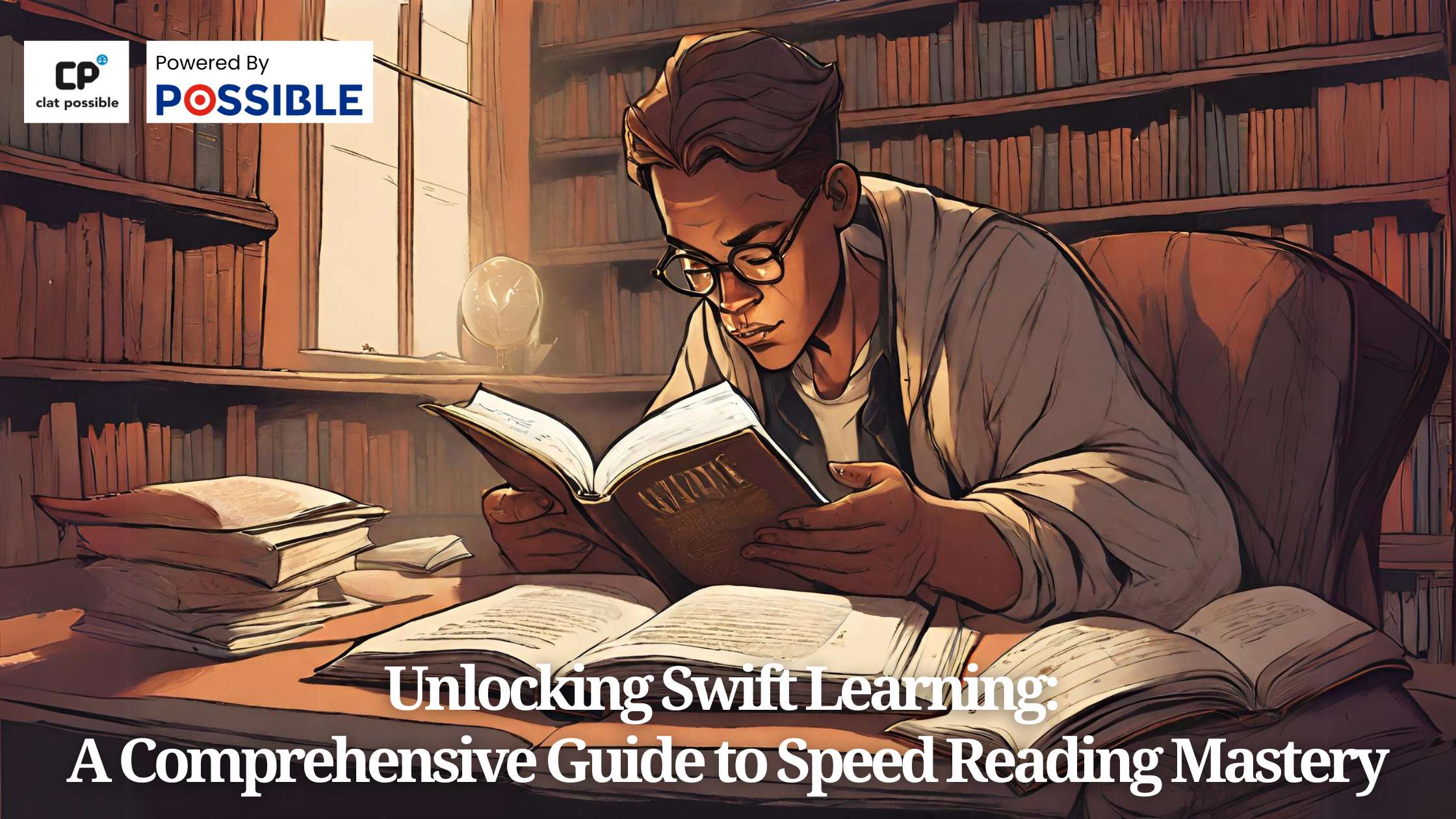
The Common Law Admission Test (CLAT) is a crucial milestone for law aspirants in India. As a national-level entrance exam, CLAT opens doors to undergraduate and postgraduate law courses at 24 National Law Universities (NLUs) and various other esteemed colleges and universities across the country.
The Consortium’s Role and Exam Scheduling
The CLAT is meticulously orchestrated by the Consortium of National Law Universities, with the National Law School of India University (NLSIU) at the forefront. This high-stakes exam, generally conducted in December each year, sees about 60,000 law students vying for a place in prestigious law programs. The upcoming CLAT 2024 is scheduled for December 3rd, followed closely by AILET on December 10th.
Latest Updates on CLAT 2024
Application Deadline: The last date to submit applications is November 3, 2024.
Reduced Question Count: CLAT 2024 will feature 120 questions, reduced from the previous 150, to be completed within 2 hours.
Accessing the Syllabus: The official syllabus and exam format are available here.
CLAT 2024 Notifications and Test Highlights
Stay updated with the latest announcements and details about CLAT 2024. This information is essential for aspirants preparing for the 2024-2025 academic years.
Test Overview
Full Form: Common Law Admission Test (CLAT)
Conducting Body: The Consortium of National Law Universities
Test Level: Undergraduate and Postgraduate
Frequency: Annual
Mode: Offline
Duration: 120 Minutes
Language: English
Purpose: Admissions to various law programs
CLAT 2024: Key Dates to Remember
Mark your calendars with these important dates:
Admission Notification: July 2023
Application Start Date: July 1, 2023
Application Deadline: November 3, 2023
Admit Card Release: End of November 2023
Exam Date: December 3, 2023
Answer Key Release: First week of December 2023
Result Declaration: Second week of December 2023
Counseling Commencement: January 2024
Exam Pattern Insights
CLAT 2024 will test candidates across five sections, each designed to assess different aspects of aptitude and reasoning:
English Language: 22-26 questions
Quantitative Techniques: 10-14 questions
Logical Reasoning: 22-26 questions
Current Affairs, including General Knowledge: 28-32 questions
Legal Reasoning: 28-32 questions
Total Marks: 120
Negative Marking: 0.25 marks for each wrong answer
Detailed insights on the exam pattern can be found here.
Eligibility Criteria
Educational Qualification: Pass in 10+2 or equivalent examination.
Minimum Marks: 45% for General/OBC/Specially abled persons, 40% for SC/ST.
Age Limit: No age limit for CLAT.
Application Process: Step-by-Step Guide
Register on the CLAT 2024 website.
Validate registration with OTP.
Log in and fill out the form.
Pay the fees and upload necessary documents.
Required Documents
Photograph: jpeg/png format
Signature: jpeg/png format
Category Certificate (if applicable): PDF format
P.W.D. Certificate (if applicable): PDF format
BPL Certificate (if applicable): PDF format
Expected Cut-Offs and Application Fees
General Cut-Off: 85-90 (out of 120)
OBC/SC/ST Cut-Off: 70-80
Application Fees: INR 4000 for General/OBC/PWD/NRI/PIO/OCI and INR 3500 for SC/ST/EWS
Detailed Syllabus Overview
The CLAT syllabus covers a broad range of topics, divided into five main sections. Each section is designed to test different skills essential for legal studies.
Preparation Tips and Strategies
Preparing for CLAT is a meticulous process. It requires a balanced approach, covering all aspects of the syllabus and focusing on weak areas. Regular mock tests and practice sessions are crucial.
Exam Centers and Admit Card Details
CLAT 2024 exam centers are spread across various cities in India. Candidates must choose their preferred center carefully. The admit card, containing vital exam information, will be available on the official website.
Looking Ahead: CLAT 2025
For those already eyeing CLAT 2025, starting early is key. A robust preparation plan, consistent practice, and a clear understanding of the syllabus and exam pattern are essential.
Key Takeaways for CLAT 2024
Exam Date: December 3, 2023
Syllabus: Five sections with a total of 120 questions
Preparation: Focus on fundamentals, practice tests, and effective study strategies
Frequently Asked Questions (FAQs) for CLAT 2024
Q1: What is CLAT and who conducts it?
A: CLAT, or Common Law Admission Test, is a national-level entrance exam for undergraduate and postgraduate law courses in India. It is conducted by the Consortium of National Law Universities.
Q2: When is CLAT 2024 scheduled to be held?
A: CLAT 2024 is scheduled for December 3, 2023.
Q3: How many questions are there in CLAT 2024 and what is the exam duration?
A: CLAT 2024 will consist of 120 multiple-choice questions, and the exam duration is 2 hours.
Q4: Is there any negative marking in CLAT 2024?
A: Yes, there is a negative marking in CLAT 2024. 0.25 marks will be deducted for every incorrect answer.
Q5: What are the eligibility criteria for CLAT 2024?
A: Candidates who have passed or are appearing in the 10+2 or equivalent examination are eligible. The minimum marks required are 45% for General/OBC/Specially abled person categories and 40% for SC/ST categories.
Q6: How can I apply for CLAT 2024?
A: You can apply for CLAT 2024 through the official Consortium website. The process involves registration, mobile number verification, form filling, fee payment, and document upload.
Q7: What is the application fee for CLAT 2024?
A: The application fee for CLAT 2024 is INR 4000 for General/OBC/PWD/NRI/PIO/OCI categories and INR 3500 for SC/ST/EWS categories.
Q8: What is the structure of the CLAT 2024 exam?
A: CLAT 2024 will have sections on the English Language, Quantitative Techniques, Logical Reasoning, Current Affairs including General Knowledge, and Legal Reasoning.
Q9: When will the CLAT 2024 results be declared?
A: The results for CLAT 2024 are expected to be declared in the second week of December 2023.
Q10: Is there an age limit to appear for CLAT 2024?
A: No, there is no age limit for appearing in CLAT 2024.
Q11: Can I change my exam center after submitting the CLAT 2024 application?
A: No, once the exam center is chosen and the application is submitted, it cannot be changed.
Q12: What documents are required for CLAT 2024 application?
A: Required documents include a photograph and signature in jpeg/png format, and category, P.W.D., and BPL certificates in PDF format, if applicable.
Q13: What is the expected cut-off for CLAT 2024?
A: The expected cut-off marks for CLAT 2024 are 85-90 for General category and 70-80 for OBC/SC/ST categories.
Q14: Where can I find detailed information about the CLAT 2024 syllabus?
A: Detailed information about the CLAT 2024 syllabus can be found on the official CLAT exam syllabus page.
Q15: How can I best prepare for CLAT 2024?
A: Preparation should include a comprehensive study plan covering all subjects, regular mock tests, staying updated with current affairs, and improving problem-solving and reading comprehension skills.
For more informative blogs on CLAT 2024 preparation, Click Here!









